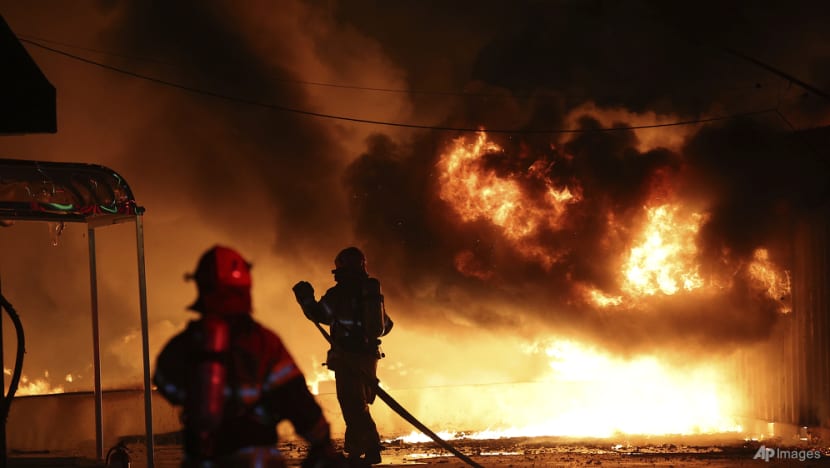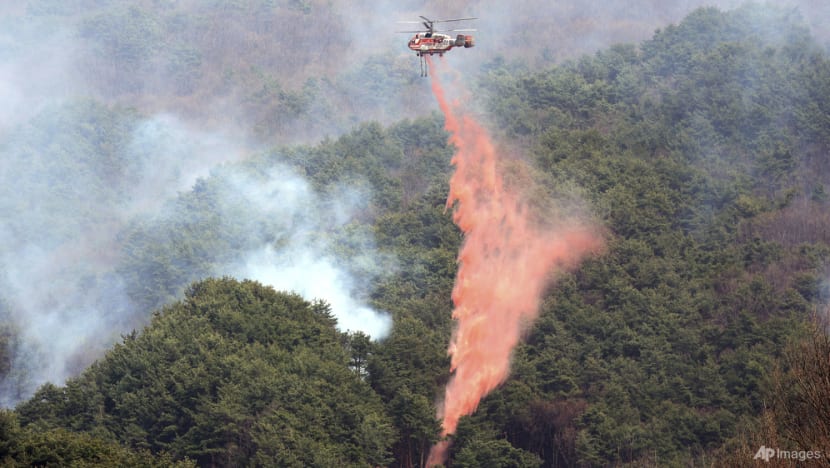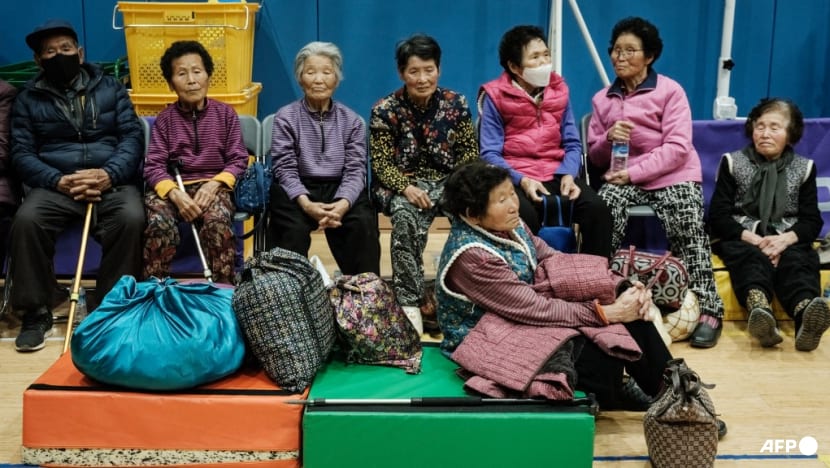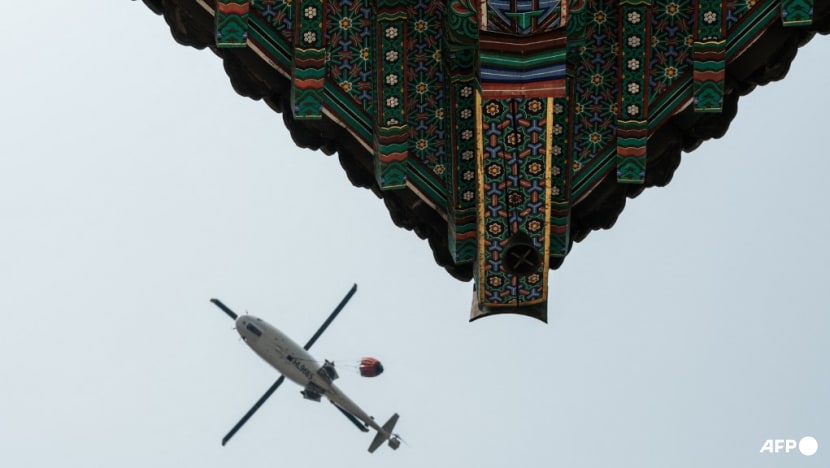Strong winds fan South Korea wildfires as death toll climbs to 18
The deadly wildfires have forced more than 27,000 residents to flee their homes.

Firefighters extinguish a fire at a factory building that was engulfed in a wildfire in Uiseong, South Korea, Mar 22, 2025. (Photo: AP/Yonhap/Yoon Gwan-shick)
SEOUL: At least 18 people have died as multiple wildfires rage across South Korea's southeastern region, with thousands of firefighters aided by the military deployed in a bid to contain one of the country's worst forest fires in decades.
The deadly wildfires have spread rapidly and forced more than 27,000 residents to flee their homes, the government said. The blazes, fuelled by strong winds and dry weather, have razed entire neighbourhoods, closed schools and forced authorities to transfer hundreds of inmates from prisons.
"We are deploying all available personnel and equipment in response to the worst wildfires ever but the situation is not good," Acting President Han Duck-soo said, adding that the United States military in Korea was also assisting.
As of 5am local time (4am, Singapore time) on Wednesday, 14 people had died in a wildfire starting from Uiseong county, while four other deaths were linked to another fire from Sancheong county, according to the Safety Ministry.
Many of those who had perished were aged in their 60s and 70s, said Son Chang-ho, a local police official.
The pilot of a helicopter fighting the fires was also killed after it crashed, the fire department told AFP on Wednesday.
The Uiseong fire, only 68 per cent contained and exacerbated by strong winds, shows "unimaginable" scale and speed, said Lee Byung-doo, a forest disaster expert at the National Institute of Forest Science.
Han told an emergency safety and disaster meeting that the blazes were "developing in a way that is exceeding both existing prediction models and earlier expectations".
"Throughout the night, chaos continued as power and communication lines were cut in several areas and roads were blocked," he added.
In the city of Andong, some evacuees sheltering in an elementary school gym told AFP they had to flee so quickly they could bring nothing with them.
"The wind was so strong," said Kwon So-han, a 79-year-old resident in Andong, adding that as soon as he got the evacuation order, he fled.
"The fire came from the mountain and fell on my house," he said.
"Those who haven't experienced it won't know. I could only bring my body."


Dry conditions are expected to persist in the wildfire-hit region on Wednesday, the Safety Ministry said.
Climate change is projected to make wildfires more frequent, Lee said, as wildfires that ravaged part of Los Angeles in January and a recent wildfire in northeast Japan are still relatively rare.
"We have to admit large-scale wildfires are going to increase and prepare more resources and manpower," he told a local television station.
South Korea relies on helicopters to help extinguish wildfires due to its mountainous terrain, but Lee said there was a need to bring in other fire-fighting aircraft and drones that can operate at night.
Eight Russian helicopters out of the Korea Forest Service's fleet of 48 used in fire-fighting had been taken out of operation since last year due to an inability to import parts from Russia because of sanctions related to the Ukraine war, Yoon Joon-byeong, a Democratic Party lawmaker said in October, using data from the forest service.
According to Yonhap news agency, the country's forestry service said that firefighting helicopters have been grounded after the fatal crash.


Kim Jong-gun, a spokesperson for the Korea Forest Service, said the agency planned to secure more wildfire-fighting helicopters, responding to criticism about a lack of equipment and helicopters on the ground.
He said that 4,919 firefighting personnel were being deployed on Wednesday, including hundreds of police officers and military units, while 87 helicopters were being used.
The blazes that broke out on Saturday in Uiseong are yet to be contained, gutting ancient temples and destroying homes.
The Uiseong fires were also threatening several UNESCO World Heritage sites - Hahoe Village and the Byeongsan Confucian Academy - in Andong city on Wednesday, a city official said, as authorities sprayed fire retardants to try to protect them.
The flames had already burnt down Gounsa Temple, an ancient temple built in 681, Yonhap reported.
The government has designated the affected areas as special disaster zones, and said the fires had damaged more than 15,000ha.















